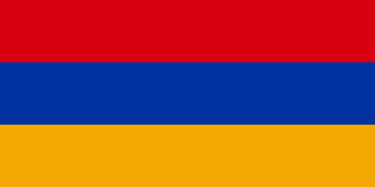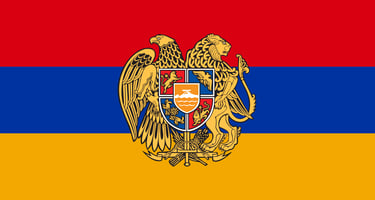ARMENIAN KNOWLEDGE
SATISFY YOUR THIRST FOR
DISCOVER THE HIDDEN BEAUTY OF ARMENIA
Download our complete Armenian language course to learn Armenian in 30 days and finally become fluent. Start speaking from the first day!
You will receive not only all the contents available on our website in a convenient pdf or epub formats but also additional contents, including bonus Vocabulary, more Grammar structures and exclusive Cultural insights with additional vocabulary that you won't in any other textbook or Armenian language course.
The additional Vocabulary includes 200 specific topics and more than 15.000 of the most important words. The additional Grammar explanations allow you to create any phrase to express yourself freely while the Culture section contains interesting information that only native Armenians would know about politics, history, customs and more!
100 FACTS ABOUT ARMENIA
Need a reason (or more than one) to study Armenian?
Discover Armenia through an extraordinary collection of 100 unique and impressive facts that highlight the country’s rich history, stunning landscapes, and cultural treasures. From being the first nation to adopt Christianity to the creation of its unique alphabet and ancient winemaking traditions, Armenia stands out as a land of remarkable achievements and heritage.
This section takes you on a journey through Armenia’s iconic landmarks, breathtaking natural wonders, and enduring traditions that set it apart from other nations. Whether you’re exploring its monasteries, marveling at its ancient artifacts, or delving into its vibrant culture, these facts will leave you inspired and eager to learn more about this captivating country.
Armenia was the first country in the world to adopt Christianity as its state religion in 301 AD.
The Armenian alphabet was created in 405 AD by Mesrop Mashtots and is one of the most unique scripts in the world.
Mount Ararat, a national symbol of Armenia, is believed to be the resting place of Noah’s Ark.
Yerevan, Armenia’s capital, is one of the oldest continuously inhabited cities in the world, established in 782 BC.
Armenia is home to the world’s oldest known winery, discovered in the Areni Cave and dating back over 6,000 years.
The apricot, known as "Prunus Armeniaca," is thought to have originated in Armenia.
Armenia is one of the few countries with a pink-colored capital city, thanks to its volcanic tuff stone buildings.
The country has over 4,000 historical monuments and sites, showcasing its rich cultural heritage.
The Tatev Monastery’s Wings of Tatev is the world’s longest reversible cable car, stretching 5.7 kilometers.
Armenia has its own chess academy, and chess is a mandatory subject in schools.
The Armenian diaspora is one of the largest in the world, with over 8 million Armenians living abroad.
The Duduk, a traditional Armenian instrument, is included in UNESCO’s Intangible Cultural Heritage list.
Armenia has one of the oldest Christian churches, the Etchmiadzin Cathedral, built in 301 AD.
Lake Sevan is one of the largest freshwater high-altitude lakes in the world.
The ancient city of Ani, known as the "City of 1,001 Churches," was once Armenia's capital.
The Armenian Genocide Memorial Complex in Tsitsernakaberd commemorates the 1.5 million Armenians killed during the genocide of 1915.
Armenia has some of the oldest standing khachkars (stone crosses) in the world, dating back to the 9th century.
The Vardavar festival, where people splash water on each other, has pagan origins but is now celebrated as a Christian holiday.
Armenia is known for its brandy, with Winston Churchill reportedly favoring Armenian Ararat brandy.
The country is home to the world’s oldest leather shoe, over 5,500 years old, discovered in the Areni Cave.
Armenia has more than 2,000 mineral water springs, making it a hub for health tourism.
The Armenian Highlands are considered one of the cradles of civilization.
Armenian carpets and rugs are renowned for their intricate designs and craftsmanship.
The Zvartnots Cathedral, built in the 7th century, is a UNESCO World Heritage Site.
Armenia has a 2,800-year-old winemaking tradition.
The Armenian genocide is recognized by over 30 countries and many international organizations.
Mount Ararat is visible from many parts of Armenia but is located in present-day Turkey.
The Garni Temple is a Greco-Roman pagan temple that dates back to the 1st century AD.
Armenia’s national dish, khorovats, is a form of barbecue often cooked on open flames.
Armenian Lavash, a traditional flatbread, is included in UNESCO’s Intangible Cultural Heritage.
Armenia celebrates Independence Day on September 21, marking its separation from the Soviet Union in 1991.
The Armenian Highlands are home to some of the earliest known metalworking tools.
Armenia’s highlands are often referred to as the “Roof of Asia Minor.”
Yerevan is older than Rome by nearly 30 years.
The Amulsar region is rich in rare geological formations.
Armenia’s national symbol, the eagle, represents strength and freedom.
Armenia is a mountainous country, with 90% of its territory situated at over 1,000 meters above sea level.
The Cascade Complex in Yerevan is a massive stairway adorned with modern art and sculptures.
The Vernissage Market in Yerevan is a hub for Armenian art, antiques, and crafts.
Armenia is one of the oldest winemaking regions in the world.
Armenian architecture is unique, characterized by pointed domes and intricate carvings.
The Armenian church has its own calendar and celebrates Christmas on January 6th.
The Amberd Fortress, built in the 7th century, is located on the slopes of Mount Aragats.
Armenia has four distinct seasons, offering a variety of landscapes throughout the year.
The Symphony of Stones in Garni is a natural basalt column formation resembling organ pipes.
Armenian manuscripts, such as those in the Matenadaran Institute, are considered treasures of medieval literature.
The Armenian Kingdom of Cilicia was a medieval state established by Armenian refugees.
The Khor Virap Monastery offers stunning views of Mount Ararat.
Armenia is home to the Eurasian lynx and other rare wildlife.
The Ararat Plain is one of the most fertile regions in the Caucasus.
The Sevanavank Monastery overlooks Lake Sevan and dates back to the 9th century.
Armenia’s Martiros Saryan is a renowned painter celebrated for his vibrant landscapes.
Armenia is famous for its pomegranate symbolism, representing life and fertility.
The Armenian language has its own branch in the Indo-European language family.
Armenia’s apricot trees are considered a symbol of national pride.
The Armenian Apostolic Church is one of the world’s oldest Christian denominations.
Armenia is a member of the Eurasian Economic Union.
The Meghri Pass offers breathtaking views of Armenia’s southern mountains.
Armenia has hosted major chess tournaments and produced world-class chess champions.
Armenian architects designed many of the Soviet Union’s iconic buildings.
The Haghpat and Sanahin Monasteries are UNESCO World Heritage Sites.
The Armenian Plateau is known for its volcanic landscapes and extinct volcanoes.
Armenia is a major producer of apricot brandy and fruit wines.
The Berd Fortress is a medieval structure located in northern Armenia.
The Tsaghkadzor Ski Resort is a popular winter destination in the region.
The Shikahogh Reserve protects Armenia’s endangered flora and fauna.
Armenia is one of the few countries with a complete historical chronicle dating back to ancient times.
Armenian shadow theater is an ancient performing art form.
Armenia’s Goris Cave Dwellings were inhabited until the mid-20th century.
The Azat River flows through the stunning Garni Gorge.
The Sardarapat Memorial commemorates Armenia’s victory against the Ottoman Empire in 1918.
Armenia celebrates Vardavar, a water festival, every summer.
Armenia’s border with Turkey is marked by the Araks River.
The Noravank Monastery is famous for its dramatic red rock backdrop.
Armenia’s aviation history began with its first airport in Yerevan in 1933.
The Debed Canyon is known for its stunning landscapes and cultural monuments.
Armenia’s Yezidi community is one of the largest outside the Middle East.
The Arpa-Sevan Tunnel is an impressive engineering feat connecting rivers.
Armenia’s traditional carpets often feature symbolic motifs and vivid colors.
The Lori region is famous for its lush green valleys and ancient monasteries.
The Armenian diaspora significantly contributes to global arts and sciences.
The Genocide Museum in Yerevan is a significant site for historical education.
Armenian folk dances are vibrant and often performed at weddings and celebrations.
Armenia’s currency, the dram, was introduced in 1993.
The Vayots Dzor region is famous for its wineries and vineyards.
The Ararat Brandy Factory is a major tourist attraction in Yerevan.
The Yerevan Opera House is a cultural hub for performing arts.
Armenia’s ancient kings are celebrated in its literature and legends.
The Zorats Karer site, also called Armenia’s Stonehenge, is a prehistoric archaeological site.
The Aragats Mountain is the highest peak in Armenia, at 4,090 meters.
Armenia’s monasteries often feature intricate stone carvings.
The Tavush region is known for its forests and picturesque landscapes.
Armenia is part of the ancient trade route known as the Silk Road.
The Lori Berd fortress was strategically important during medieval times.
The city of Gyumri is known for its art and cultural heritage.
The Shoghakat Monastery was built where a ray of light is said to have fallen.
The Dilijan National Park is known as the “Armenian Switzerland.”
Armenian illuminated manuscripts are celebrated for their beauty and detail.
The Akhtala Monastery features rare frescoes of Byzantine influence.
Armenia’s hospitality is deeply ingrained in its culture, treating guests as blessings.
Be sure to check out our Armenian Culture section if you want more knowledge about Armenia and its people.






